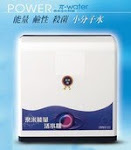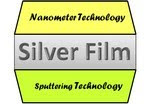A: Raw materials used by BioSum ACR Bag is “sub-nanometer photocatalyst" and is finer than 10-9 molecular materials. When matter is as small as 1 to 100 nanometers, many of its features will easily change and have many unique features both different from macro-matters and single atoms due to the quanta effect, regional confinement of matter, and huge surface or interface effects. The final objective of nanometer technology is to produce products of special functions with new physical and chemical features by making atoms, molecules and matters presenting their features directly in the length of a nanometer: for example, the strength of ten times of iron could be very light, all information in a library could be stored in a chip the size of a sugar cube, and tumors the sizes of only several cells can be detected.
Theoretically, when photocatalyst absorbs radiation from sunlight or illuminated light source (like fluorescent lamps), it will produce pairs of electrons and holes. The electron of the valence band becomes excited when illuminated by light. The excess energy of this excited electron promoted the electron to the conduction band therefore creating the negative-electron (e-) and positive-hole (h+) pair. This stage is referred as the semiconductor's 'photo-excitation' state.
Simply speaking, ACR Bag absorbs light and produces energy to excite the bag’s inner coating elements to build into a specific energy wave frequency to break the toxic chemical bond residue in fruits and vegetables so as to decompose their toxic elements.
A:BioSum 健康蔬果袋原料為”次奈米光觸媒”,是一種比10-9還要細微分子材料,它就像宇宙的黑洞一樣,能吸收光線,產生能源,讓周圍分子產生劇烈運動,其特定波頻可以打斷蔬果農藥中有毒物質的分子鍵,使其毒性分解消失。其實,它就是太陽能的一種運用。一般說來,光觸媒是利用光來加快化學反應的速度。植物中的葉綠素是一種典型的天然光觸媒。葉綠素與人為納米光觸媒之間的差異:葉綠素吸收陽光把水和二氧化碳變成氧氣和葡萄糖,但相反的納米光觸媒產生強大氧化作用將有機物分解為二氧化碳和水。
2008 SGS Certificate

SGS Accreditation
2006 TACTRI Certificate

Blog Archive
-
▼
2008
(27)
-
▼
September
(15)
- Q:Why is BioSum ACR Bag an excellent value-for-mon...
- Q:什麼是SGS認證?
- Q:What is TACTRI certification? 台灣農業藥物毒物試驗所
- Q:What is SGS certification?
- Q: Do this product need any special license to be ...
- Q:Does BioSum ACR Bag materials contain any toxic ...
- Q:Which kind of light is effective? 什麼樣的光線才有效?
- Q:Does the photocatalyst used in BioSum ACR Bag ha...
- Q:What is the life span of BioSum ACR Bag ? BioSum...
- Q: How to use ACR Bag? How long it will take to re...
- Q:Why BioSum ACR Bag can remove the pesticide resi...
- Q:What is the difference between BioSum ACR Bag, p...
- Q:What is the theory of BioSum ACR Bag ? BioSum 健康...
- Q:What is Nanometer? 什麼是次奈米?What is Photocatalyst?...
- Q:How to proof BioSum ACR Bag enabling technology ...
-
▼
September
(15)
Frequently Asked Questions 尋根問底
- Q:How to proof BioSum ACR Bag enabling technology is really working?如何知道它有沒有效?
- Q:What is Nanometer? 什麼是次奈米?What is Photocatalyst?什麼是光觸媒?
- Q:What is the theory of BioSum ACR Bag ? BioSum 健康蔬果袋是什麼原理?
- Q:What is the difference between BioSum ACR Bag, pesticide detergent & Ozone for reducing pesticide residual? BioSum 健康蔬果袋與一般浸泡劑或臭氧機有何不同?
- Q:Why BioSum ACR Bag can remove the pesticide residue inside fruit/vegetable? 為什麼BioSum 健康蔬果袋分解農藥效果可深達果肉部分?
- Q: How to use ACR Bag? How long it will take to remove the pesticide residue? 如何使用?除農藥過程需要多久?
- Q:What is the life span of BioSum ACR Bag ? BioSum 健康蔬果袋使用有效期限多長?
- Q:Does the photocatalyst used in BioSum ACR Bag has similar properties as those used in air-con or air-purifier? BioSum健康蔬果袋所用的光觸媒,與一般冷氣、空氣濾清器所用的光觸媒?
- Q:Which kind of light is effective? 什麼樣的光線才有效?
- Q:Does BioSum ACR Bag materials contain any toxic element? 原料有沒有毒?
- Q:Why is BioSum ACR Bag an excellent value-for-money product? 為什麼物超所值?
- Q: Do this product need any special license to be imported into Singapore?


